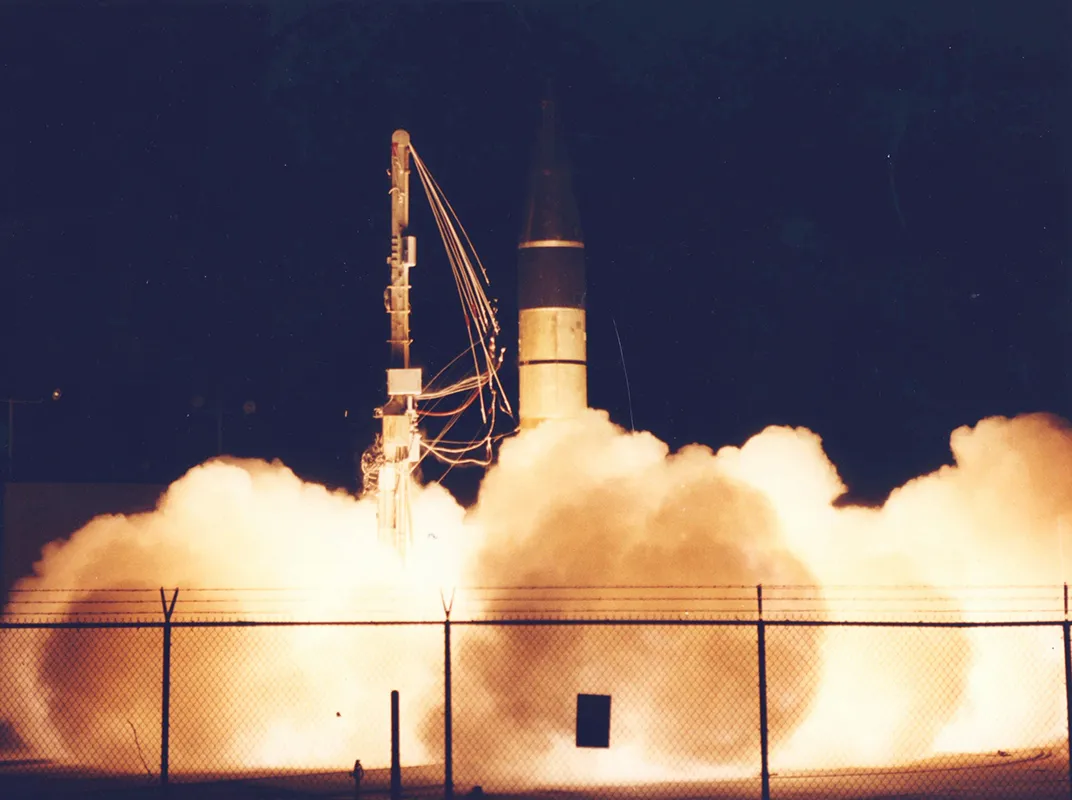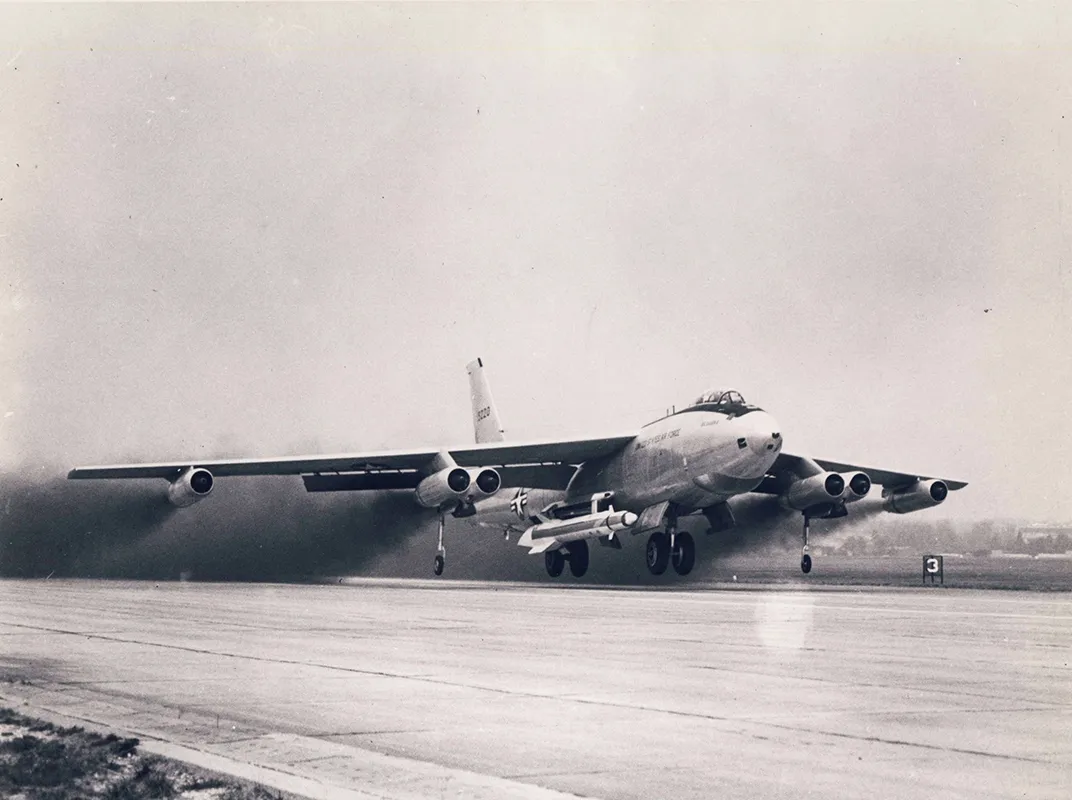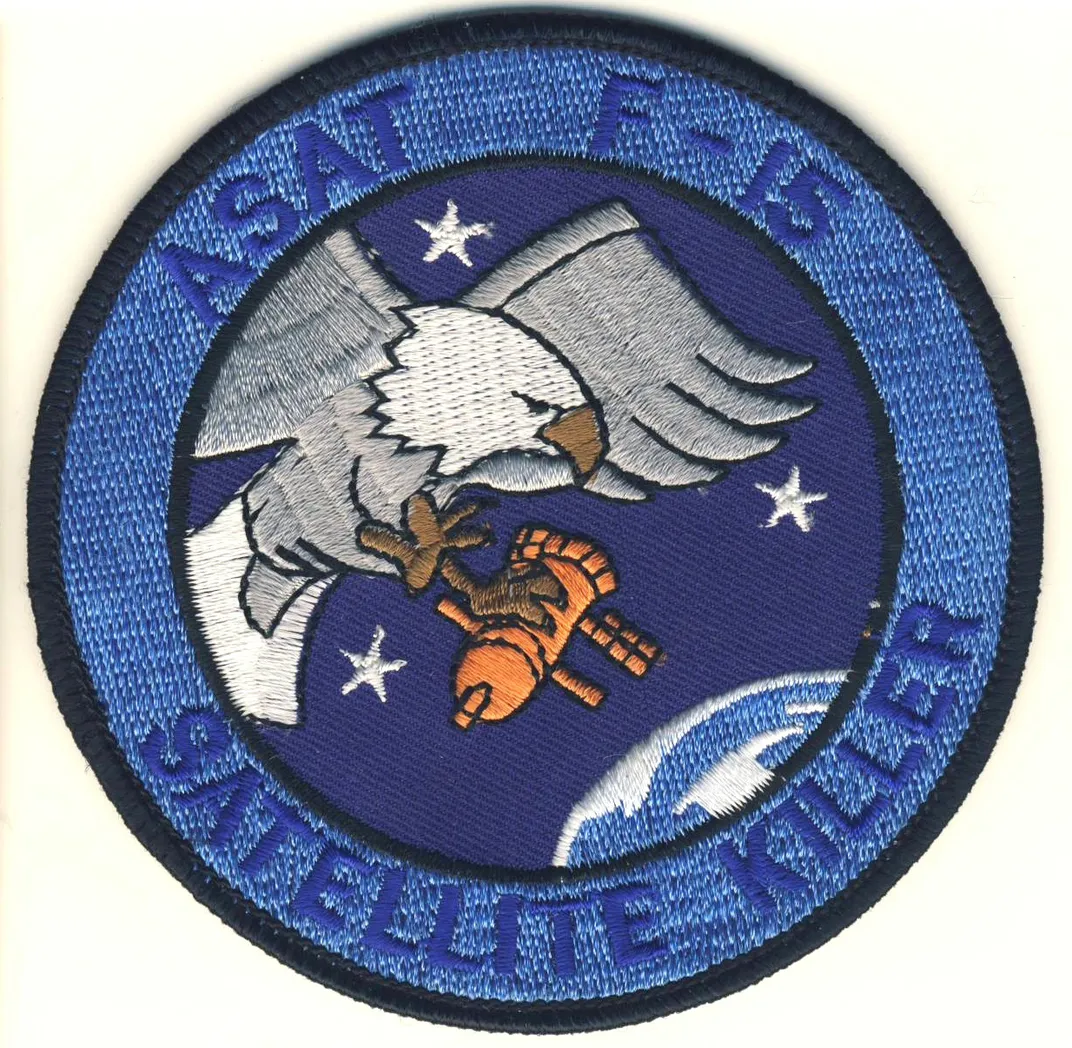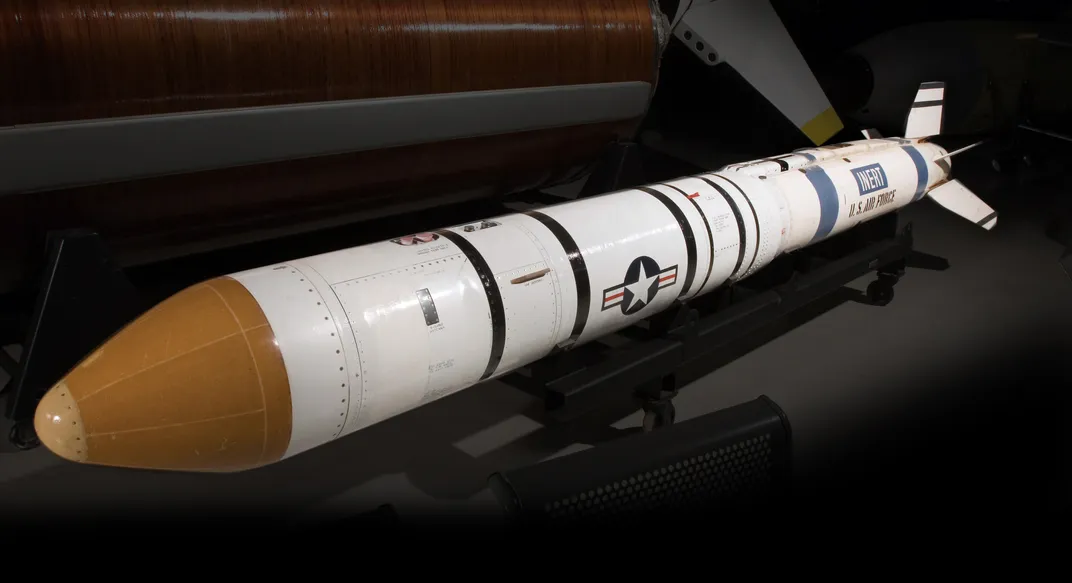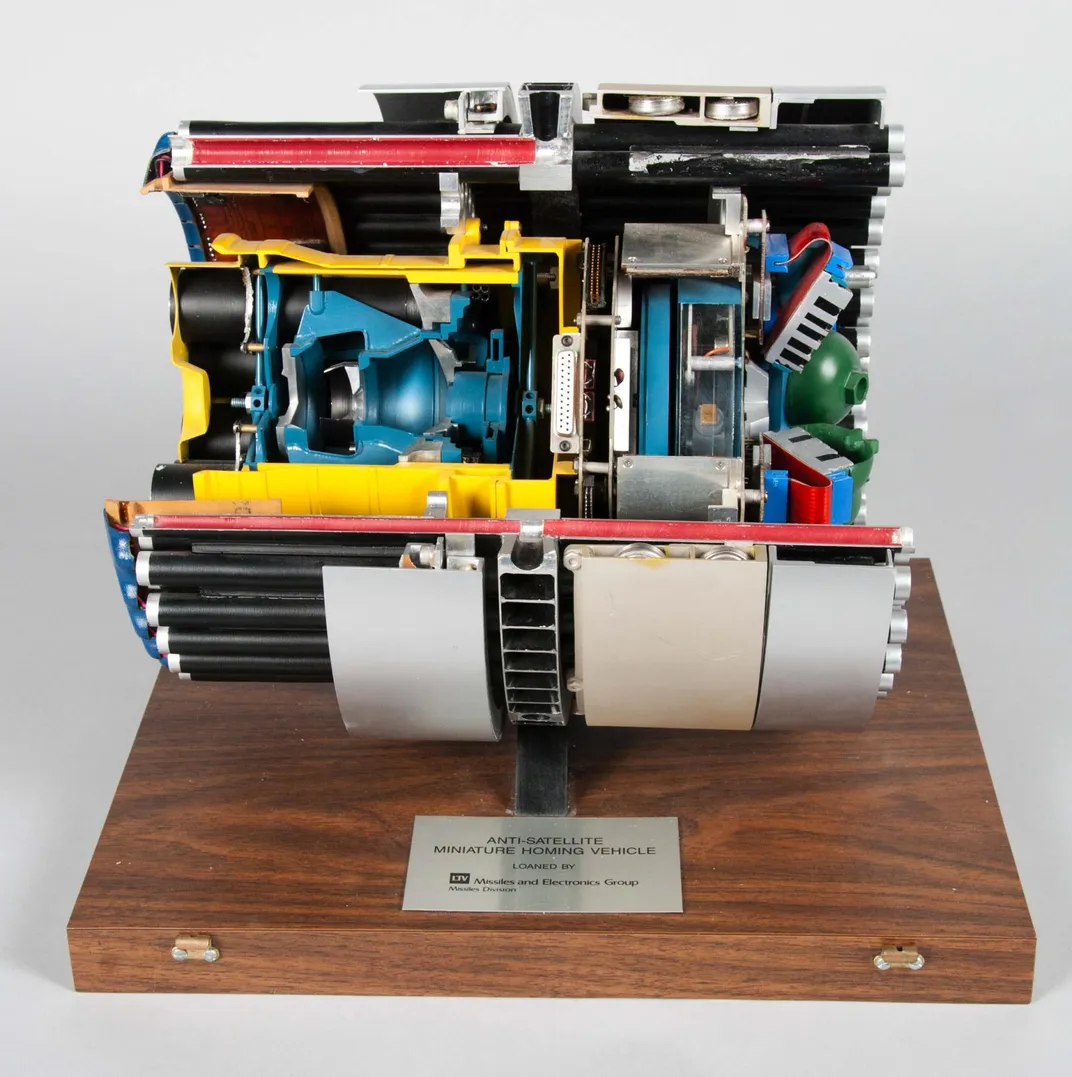The First Space Ace
F-15 vs. Satellite
:focal(1373x774:1374x775)/https://tf-cmsv2-smithsonianmag-media.s3.amazonaws.com/filer/c5/68/c5689d37-a186-4e1b-9fb6-8ee982834123/f15_shoot.jpg)
On September 13, 1985, at 12:42 p.m., Major Wilbert “Doug” Pearson pushed the “pickle button” in the cockpit of his F-15A, launching a missile high over the Pacific Ocean. He was in a steep vertical climb, flying at just under Mach 1, and was at 36,000 feet. The missile roared toward its target, the Solwind P78-1 satellite moving at 17,500 mph, almost 300 miles above Pearson’s aircraft. As the missile disappeared from view, all Pearson could do was wait—he wouldn’t be able to see if it had hit the target. But his friend Scott in the control room would know. They worked out a code so Pearson could find out when he radioed Scott after the launch.
Recalls Pearson: “I’d tell him ‘I’m going to level off at 36,000 feet.’ And if we’ve had a successful intercept, you’ll say, ‘Roger, Aggie-1 [Pearson’s call sign]. That’s a good altitude.’ And if we missed, you’ll say, ‘Roger, Aggie-1. Recommend you go to 28,000 feet’ or some different number. Well, Scott never had to say a word,” Pearson laughs. “He just keyed the microphone and I heard all the screaming and hollering and yelling and cheering in the background.”
For the first time in history, a satellite had been shot out of space by an airplane. It remains a unique moment in the complicated, ever-evolving race between rival space powers. Although a fighter pilot earns the title “ace” only after five victories, Pearson’s unique, outside-the-atmosphere bull’s-eye could define a new space category.
The anti-satellite (ASAT) arms race began just after the first beeps came back from Sputnik I, in October 1957. Fears of nuclear-armed Soviet satellites drove early development of American ASAT weapons systems, which were themselves based on nuclear-tipped missiles launched from aircraft, submarines, or the ground.
During 1958 and 1959, the first U.S. experimental ASAT weapons were air-launched ballistic missiles, including Bold Orion, launched from an Air Force B-47 Stratojet, and High Virgo, launched from a Convair B-58 Hustler. In 1962, the Navy experimented with a system that launched a similar missile from a McDonnell F-4 Phantom. Although each system was tested, none went into operation.
In the early 1960s, adapted versions of the ground-launched Nike-Zeus and Thor anti-ballistic missiles systems were tested in the south Pacific for possible ASAT use. (After one launch missed in 1963, a Nike-Zeus intercepted and destroyed an Athena upper-stage target vehicle.) A ground-launched system situated on the equator has advantages: Nearly every low-Earth-orbit satellite will eventually pass overhead. Using nuclear explosions to destroy satellites—something that was tested during the Thor program—had a big flaw. The resulting electromagnetic pulse would also destroy nearby untargeted satellites. And in the weeks and months after detonation, additional satellites would succumb to the increased radiation in low Earth orbit.
At the same time U.S. agencies and corporations were pursuing ASAT research, so was the Soviet Union. Their satellite killers were co-orbital—designed to reach orbit, sync up with their targets, and detonate, sending shrapnel out to destroy enemy satellites. The Soviets carried out tests of these systems from the 1960s into the early 1980s, successfully destroying several targets. But the co-orbital systems also had a major drawback—syncing the ASAT vehicle with its target required at least two full orbits of Earth, which gave the target three to five hours to maneuver out of the ASAT’s reach.
By the mid-1970s, the United States still did not have a viable ASAT program. In a series of now-declassified 1976 memos to President Gerald Ford, National Security Advisor Brent Scowcroft laid out the urgent recommendations of a National Security Council panel to develop non-nuclear ASAT capabilities.
“The Ford administration was growing increasingly concerned about how [to] protect U.S. satellites from Soviet anti-satellite weapons,” says Brian Weeden, director of program planning for the Secure World Foundation. The United States was also increasingly concerned about Soviet surveillance satellites. “One of the things they could do with those reconnaissance satellites is observe our military forces literally all over the world, but primarily our ships,” says Pearson. “So we wanted to be able to take out those observation satellites so that we could maneuver our carrier battle group and regain the element of surprise.”
In 1978, in response to the Soviets’ co-orbital ASAT system, the Carter administration launched the program that led to Major Pearson’s remarkable shot. His bullet was the multi-stage ASM-135 missile, developed by LTV Aerospace. “Our program was challenged to develop a dynamic weapon system that could respond rapidly, accurately, and with flexible targeting capability. That led us to an air-launched weapon,” says Pearson.
The ASM-135 weapon was based on three fundamental components: the aircraft to fly the missile to altitude, essentially acting as its first stage; then the missile itself, which had two stages that launched the Miniature Homing Vehicle (MHV)—the small autonomous craft that would collide with an oncoming satellite. The technique is called kinetic hit-to-kill: no explosives needed, just the energy released by the collision of two spacecraft rushing toward each other at closing speeds of almost 36,000 feet per second.
The program was managed from the Air Force’s Space Division, out of the Los Angeles Air Station, and brought civilian contractors (primarily Boeing, Ling-Temco-Vought, and McDonnell Douglas) together with Air Force personnel. The missions were flown from Edwards Air Force Base, where Pearson commanded what was called the F-15 Anti-Satellite Combined Test Force, or CTF.
/https://tf-cmsv2-smithsonianmag-media.s3.amazonaws.com/filer/12/88/1288eb0d-3d93-4a72-99d3-f05184fb7b06/34b_am2018_f15asat10parelease18097_live.jpg)
Why the F-15? “The F-15 was a real racehorse,” says Pearson. “We could fly supersonic and we could maneuver it to be in the right kind of a climb, and we could integrate all the required systems into the airplane to communicate with the missile. It could physically hold the ASAT weapon. It was a very large missile so it needed a big enough airplane. An F-16 didn’t have the ground clearance; you couldn’t put the missile on the centerline of the airplane and take off with it without hitting the ground. We could take operational F-15A airplanes and with fairly minimal modifications turn those into ASAT-killer airplanes.”
Another critical factor was that the computers of 1985 could do the calculations required to bring satellite and kill vehicle together far easier than had been the case before. Says Pearson, “We could do the math.”
The ASM-135 program began testing in 1982. Pearson and four other pilots were trained to fly the mission, and there was plenty of practice beforehand. “I practiced the profile hundreds of times both over land and over the ocean,” Pearson recalls. He had profiles for subsonic and supersonic missions, depending on which launch velocity the missile would need to hit targets orbiting at higher or lower altitudes. But timing was the most important factor in making sure the MHV had its close encounter with the target satellite.
Jack Anthony led the team at Cheyenne Mountain Air Force Base that figured out the F-15’s flight plan for the last two ASAT missions. “We had a bunch of smart people who knew the satellite, knew where it would be and when it needed to be encountered by the miniature vehicle,” he recalls. “And from there, we worked backwards.”
Pearson says, “When they gave me a target, Air Force space operations personnel in Cheyenne Mountain would calculate a detailed mission plan. It was basically a 24-hour profile. We started well in advance of the launch time with making sure the missile was ready, the airplane was ready, transport, just detail after detail after detail. We were down to the minute on all of these things, and to the second on the missile launch time.”
Five test launches of the ASM-135 missile were made from the F-15. The first was to ensure they could get the missile separated from the jet and fly it to the required altitude of about 340 miles. The second test aimed the missile at a star to evaluate its targeting capability. The third was the real thing: shooting down a satellite. Two more launches followed, also aimed at stars. “The sensor was aimed at a star that had an infrared signature,” says Anthony. “We played a little game with the math to make it look like it was a star orbiting the earth. It was just to test the sensor and make sure that the system, if called upon, would be able to distinguish between the target and stars in the background.”
But for the shootdown demonstration, the team needed a real satellite. The Solwind was still gathering weather data, but it had officially outlived its useful life. And it would be in the right spot for the test, which was initially set for September 4, 1985.
Pearson had invited General Forrest McCartney, the commander of Space Division at Los Angeles Air Station, to witness the test. As they waited in the officers’ club for final ground checks to be made, McCartney received a phone call. Pearson recalls, “He comes back in a few minutes and says, ‘Well, not so good news. We have been canceled for today.’ ” An injunction was filed preventing the launch. A handful of Congressional representatives, together with the Federation of American Scientists, had filed suit, claiming that a presidential certification to Congress, stating that the test was required for national defense, had not come within 15 days of the launch, as obliged by law. It had been filed 14 days before.
The injunction was not based on a trivial technicality. President Ronald Reagan’s Strategic Defense Initiative (nicknamed “Star Wars”) had just been announced, and many opponents to SDI saw the ASAT program as part of a rush toward the weaponization of space. Opponents also objected to the timing of the test: two months before a summit between Reagan and Soviet Premier Mikhail Gorbachev. Would the test provoke the Soviets?
A federal judge denied a second injunction, and Pearson’s team determined they could launch on September 13.
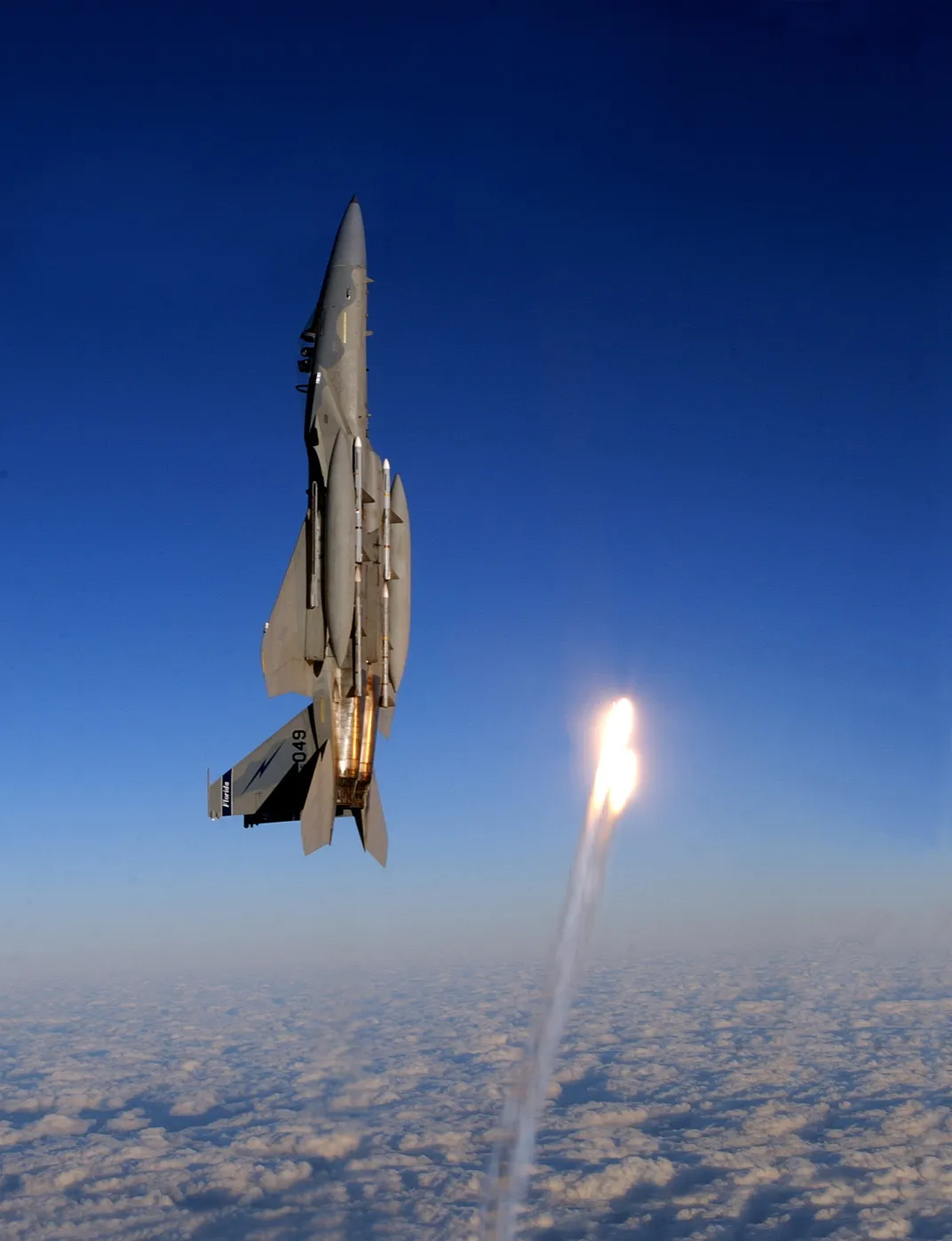
**********
Pearson made his first rendezvous with a tanker about 200 miles from Vandenberg Air Force Base within the exact timing criteria for the rendezvous.
Anthony recalls, “The pilot would take off and fly what are called ‘waypoints,’ and an onboard computer would tell him where to go and when to be there. It required precise flying skills to arrive at the points and ultimately be in position, speed, and attitude to launch.”
“The system required the launch to occur at the preplanned time to be able to complete the intercept,” recalls Pearson. “Each point had tighter and tighter tolerances, and my correction ability became more constrained the closer to the launch time. If I arrived at each point on time, my confidence improved significantly that I would reach the launch point within all the constraints. By the time I got to the last point, the launch point, I was precisely on time.”
The moment came at 12:42 p.m., three and a half hours after Pearson took off. At 30,000 feet and in level flight, Pearson lit the afterburners, accelerated the airplane to Mach 1.3, and pulled into a 60-degree climb. The F-15 slowed to Mach .96 as the countdown started. At zero, Pearson pushed the pickle button.
The missile separated, and Pearson’s F-15 was suddenly 3,000 pounds lighter. He rolled so he could see the rocket fire. “It was just a beautiful sight to see the missile suspended there and the flame come out of the rocket motor. And then it took off like a bandit.” The Solwind satellite was then over Hawaii, zooming along at 23,000 feet per second. “And the rocket accelerates to about 13,000 feet per second,” says Pearson. “So you have a closure of 36,000 feet per second.” He waited until the moment he knew impact should have occurred, then called his friend Scott in the control room and heard the cheers.
“It was a big day,” Pearson says. “We had hundreds and hundreds of people working very hard, for a very long time, to make this a success, and it was. [It] had a big impact on our adversaries because they had been very dependent on being able to put up these reconnaissance satellites, and they now knew—by demonstration—we could negate that. I think from their point of view, we made it look easy. We took off, we flew out, we pulled up, we killed a satellite. They never saw us sweat, in other words.
“There were a number of technical challenges that some thought we could not overcome,” Pearson recalls. “Thirty-five years ago, hitting a bullet with a bullet seemed impossible to many people. The F-15 ASAT program clearly demonstrated one high-speed object—faster than a speeding bullet—could be guided to a precise impact on another, even faster object.”
But the ASM-135 program had only two more flights, in the following year, before Congress cut its funding. “I really thought we were going to deploy it,” Pearson says. “There was no doubt in my mind that we were going to have two squadrons of ASAT killers—one on the East Coast, one on the West Coast. But it wasn’t meant to be.”
A halt in the U.S. ASAT tests was part of a deal under a compromise Pentagon budget: House-Senate negotiators agreed to an ASAT test ban in return for approval on new chemical weapons production.
Pearson retired in 2005 as a major general in command of the Air Force Flight Test Center at Edwards. Reflecting on the mission’s legacy, he says, “The program had a significant number of successes, not the least of which was planning and understanding how to kill a threat satellite in Earth orbit with another object. That’s no small task. And being able to surveil the target, to watch it, look at it, predict where it will be to parts of a second, and then be able to put another object in that same space within little bitty parts of a second is not trivial. We understood how to do that, and demonstrated we could do that. That was a big deal.”
**********
A secondary consequence of the shootdown was the 285 pieces of debris the collision created; it took almost 19 years for all of it to reenter the atmosphere. The ASM-135 team was certainly aware the floating space junk would spread and take years to fall out of orbit, but the attitude toward debris was more casual then.
In 2007, a ground-based Chinese ASAT missile took out an aging weather satellite, creating 3,000 pieces of debris—a huge field that caused international outrage. The test also challenged the perception that the United States dominated space. “It basically signaled that if there was a brief period of time where the U.S. was unchallenged in space, that was pretty much over,” says Weeden.
In 2008, the Pentagon tasked the U.S. Navy with firing an SM-3 missile from the USS Lake Erie in order to destroy the failed USA-193 satellite. (The shootdown was explained as a way to prevent the satellite’s 1,000 pounds of hydrazine fuel from surviving reentry as a toxic cloud.) The Pentagon assured the press and public that it had taken steps to minimize the debris created—174 trackable pieces that were predicted to fall into the atmosphere within 48 hours of the collision. In fact, the final piece of debris reentered the atmosphere 18 months later.
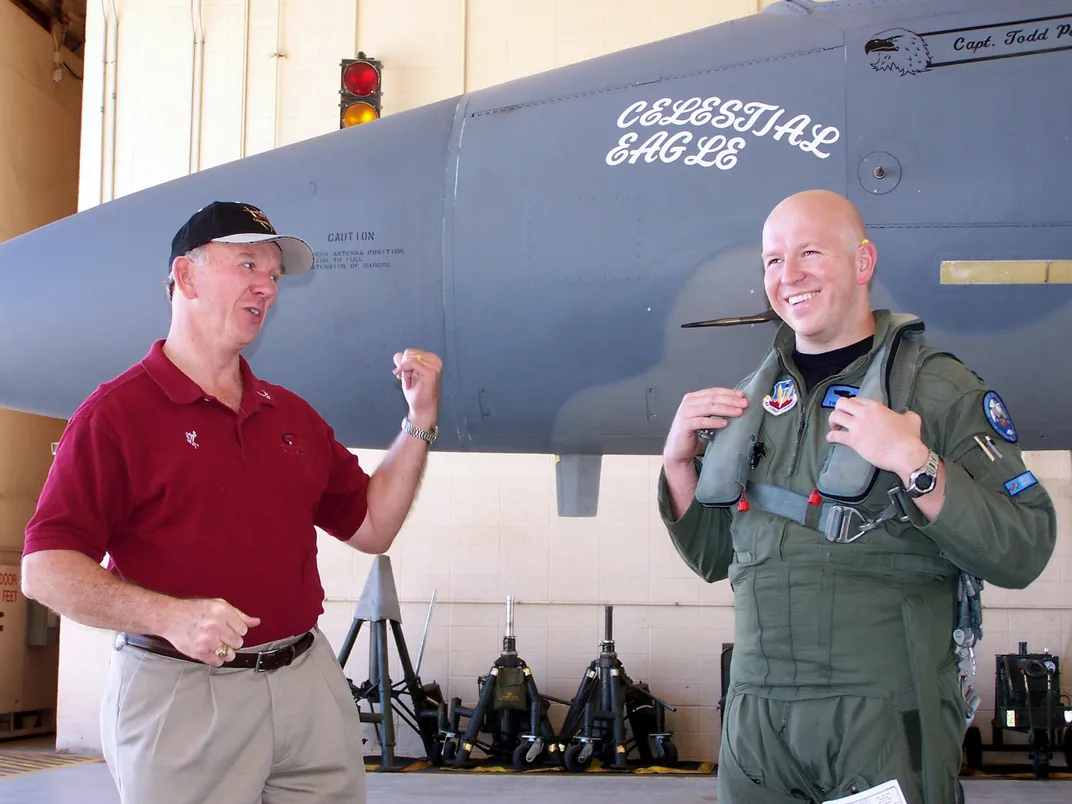
Even small pieces of debris pose enormous hazards to the more than 1,700 satellites and other spacecraft currently in orbit. “Satellites are so much more intertwined with the way we conduct military, economic, civilian, and scientific activities,” says Laura Grego, a senior scientist for Global Security at the Union of Concerned Scientists. “There aren’t just two superpowers in place any more; there are more than 70 countries that have had satellites in space. They do all sorts of things in addition to national security.”
On May 11, 2017, U.S. Director of National Intelligence Dan Coats testified in a hearing of the Senate Select Committee on Intelligence before Congress that Russia and China “will continue to pursue a full range of [ASAT] weapons as a means to reduce U.S. military effectiveness.” Current ASAT concepts that don’t use hit-to-kill include using lasers to blind or “dazzle” satellites, and jamming a satellite’s uplink and downlink signals. Recent hit-to-kill weapons development has targeted suborbital objects, so there would be no orbiting debris.
Grego is a technical adviser on MILAMOS, the Manual on International Law Applicable to Military Uses of Outer Space, which clarifies the rules regarding the military use of space in peacetime and war. Although MILAMOS is a civilian effort, Grego reports that the project has support from the Pentagon. To date, a comprehensive, negotiated ASAT treaty has never been signed. “I definitely see anti-satellite technology outpacing our efforts to constrain it or to agree about how it may be used,” Grego says. “I think we are way overdue for a serious conversation between the space powers. What do we mean by peaceful uses? How do we interpret ambiguous behavior? Just to have a solid conversation on this would be a huge step.”
